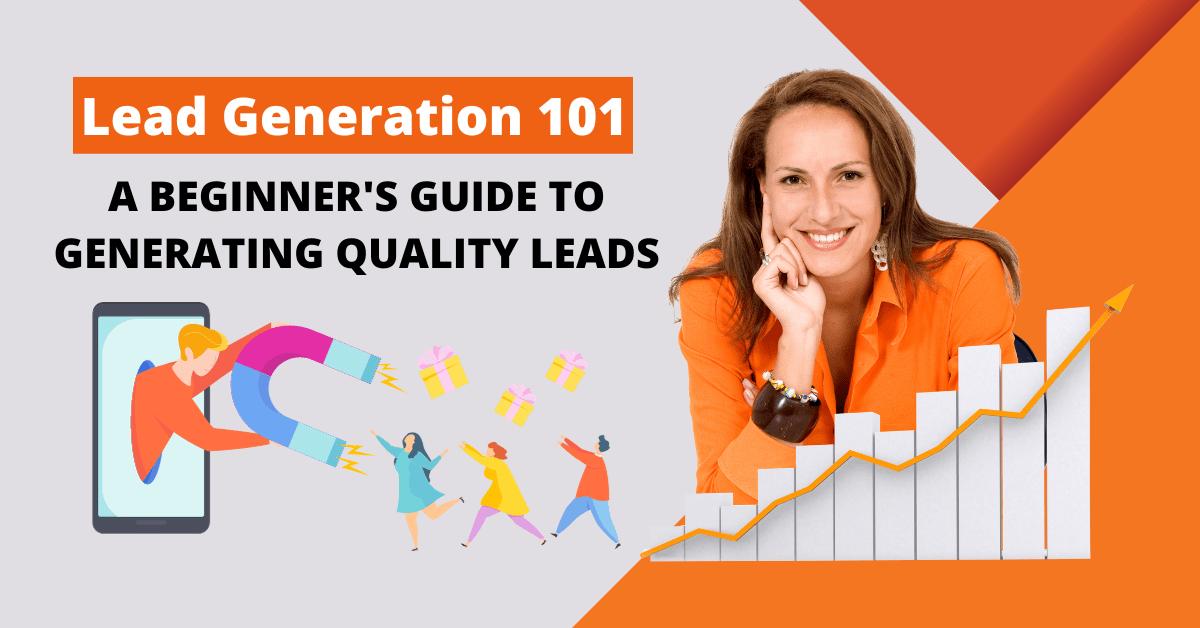Lead generation is a crucial component of any successful marketing strategy. It involves attracting and capturing the interest of potential customers, ultimately leading to sales and business growth. However, generating a significant number of leads is not enough; quality leads are essential for long-term success. In this beginner’s guide, we will explore the fundamentals of lead generation, providing you with valuable insights to build a strong foundation for generating quality leads.
Understanding Lead Generation
Lead generation is the process of identifying and attracting potential customers who have shown an interest in your products or services. It plays a vital role in the marketing funnel, specifically in the “awareness” and “interest” stages. While quantity is important, quality leads carry higher potential for conversion into paying customers.
Focusing on quality leads allows businesses to prioritize effective targeting, personalization, and relationship building, resulting in higher conversion rates and customer loyalty. Quality leads have a higher chance of making repeat purchases, becoming brand advocates, and driving referrals.
Setting SMART Goals
Setting SMART goals is essential for effective lead generation. SMART stands for Specific, Measurable, Attainable, Relevant, and Time-based. Clearly defining your goals will help you stay focused, monitor progress, and evaluate the success of your lead generation strategies.
For example, instead of setting a vague goal like “increase lead generation,” a SMART goal could be “increase website lead conversions by 20% within the next three months by optimizing landing pages, improving lead capture forms, and launching targeted campaigns.”
Defining Target Audience
To effectively generate quality leads, it is crucial to understand your target audience. This involves creating buyer personas, which represent your ideal customers based on market research and customer insights.
Identifying your target audience allows you to tailor your lead generation strategies, messaging, and offers specifically to their needs and preferences. It enables you to deliver highly targeted and personalized content that resonates with potential leads, increasing the chances of conversion.
Creating Irresistible Offers
An irresistible offer is a compelling incentive that entices potential leads to take action and provide their contact information. These offers are typically in the form of lead magnets, such as ebooks, webinars, or exclusive access to valuable content.
Designing high-converting landing pages is crucial for effectively capturing leads. Your landing page should highlight the value of your offer, address potential pain points, and make it easy for visitors to provide their information. A clear call-to-action and an optimized lead capture form are vital components of a successful landing page.
Utilizing Multiple Lead Generation Channels
Effective lead generation involves utilizing multiple channels to reach and engage with potential leads. These channels may include your website, social media platforms, email marketing, and more.
It’s important to identify the channels where your target audience is most active and tailor your strategies accordingly. For instance, if you’re targeting younger demographics, social media platforms like Instagram or TikTok might be more effective, while B2B businesses may focus on LinkedIn or industry-specific forums.
Implementing Effective Lead Capture Forms
Lead capture forms are crucial for converting website visitors into leads. It’s important to design forms that are user-friendly and non-intrusive, reducing friction and increasing conversion rates.
Consider including only essential fields in your lead capture forms to minimize the time and effort required from potential leads. Utilizing automation tools and customer relationship management (CRM) software can also streamline the lead capturing process and ensure efficient management of leads.
Nurturing Leads & Building Relationships
Lead nurturing refers to the process of fostering relationships with potential leads through consistent and personalized communication. It involves providing valuable content, addressing pain points, and guiding leads through their buying journey.
To effectively nurture leads, you can utilize email marketing campaigns, personalized content recommendations, and targeted advertisements. By establishing trust and addressing their needs, you increase the likelihood of converting leads into paying customers.
Monitoring and Analyzing Lead Generation Performance
Tracking key performance indicators (KPIs) is crucial for evaluating the success of your lead generation efforts. By regularly monitoring analytics and metrics, you can uncover insights to improve your strategies and achieve better results.
Pay attention to metrics like website traffic, conversion rates, lead acquisition costs, and customer lifetime value. Analytical tools, such as Google Analytics or marketing automation platforms, can provide valuable data to identify what’s working and what can be optimized.
Conclusion
Achieving quality lead generation requires a well-thought-out strategy and ongoing analysis. By understanding the fundamentals, setting SMART goals, defining your target audience, creating irresistible offers, utilizing multiple channels, implementing effective lead capture forms, nurturing leads, and continuously monitoring your performance, you can build a strong foundation for generating quality leads. Remember, quality leads have the potential to fuel business growth and long-term success.
Thank you for reading! Share your experiences and questions in the comments below!




Cool, I’ve been looking for this one for a long time